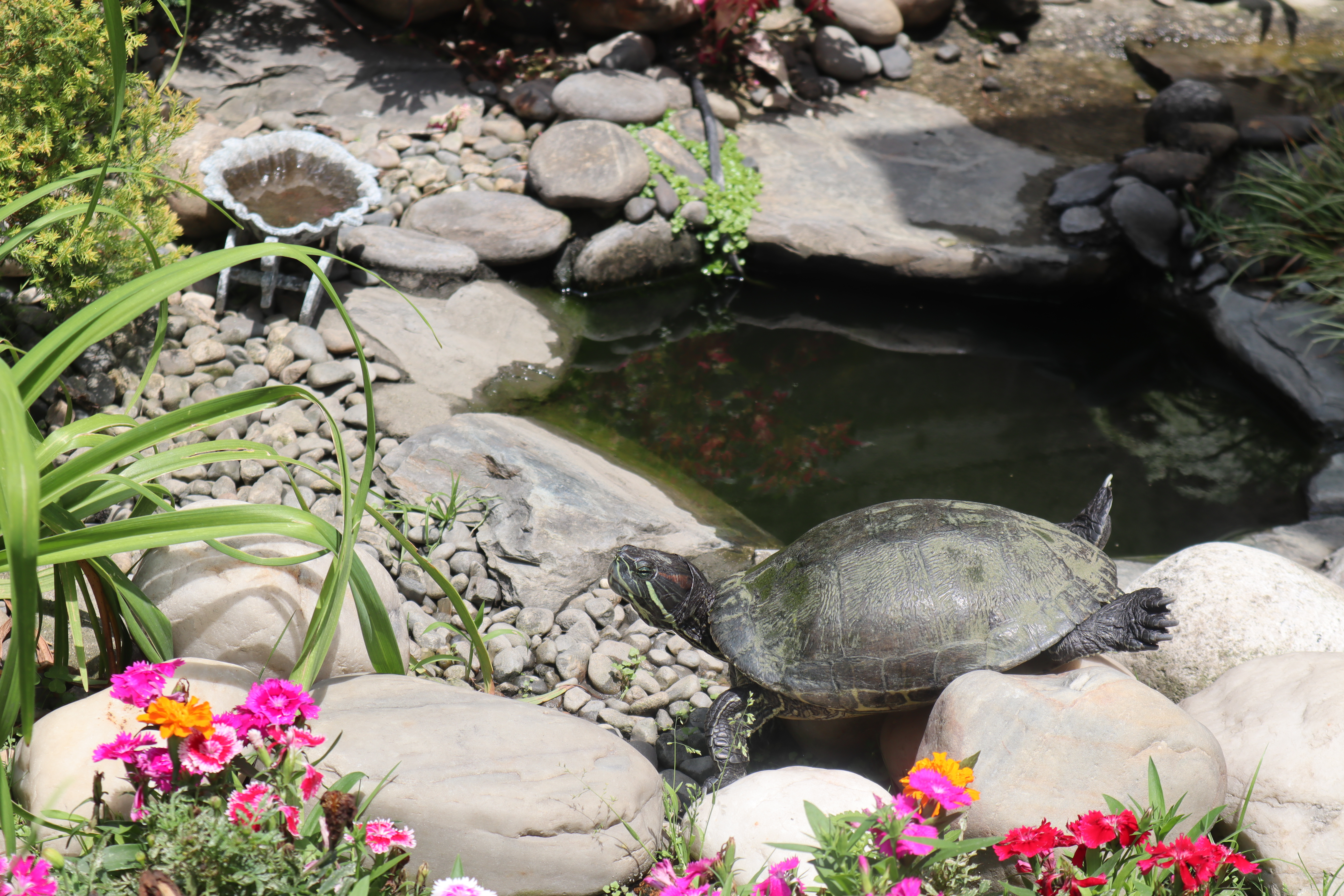At first, the tiny critters were no bigger than a large coin but, with time, they grew. The fishbowl turned out to be too cramped for the restless wild critters. So, I got a larger tank, and our daughters and their pets seemed happy.
After two years, Smriti left Nepal for the US for further studies, leaving the turtles’ care to Preeti. But something went awry, and one of the turtles died. A sad incident for all of us, more so for Preeti. She blamed herself for it. Time heals the worst of wounds and Preeti recovers. The lonely turtle also bounced back to life. Years went by, and we moved into our new house. As the turtle kept growing, the aquarium, too, seemed inadequate. So, I built a miniature pond in our garden. The semiaquatic turtle appeared thrilled as the pond meant it could swim in a larger space, bask in the sun, and wander around our small garden. Everything was great, for a while. But it wasn’t meant to last. After raising the turtle for three years, Preeti, too left for the States. As my wife, Radhika, had to report to work, the responsibility of looking after the turtle fell upon me. Taking care of a turtle is easier said than done. The ordeal began, putting me to a genuine test. Feeding the turtle was no big deal, nor was tank cleaning, as it had an outlet to drain off the sullied water and an inlet to let in a fresh supply. Most reptiles lay eggs, as snakes do. Turtles, cold-blooded reptilians, do the same. I figured my non-mated she-turtle would not spawn. I got it all wrong. Once, I found it rambling around the garden in a frenzy, desperate to find a niche to lay eggs. It laid two unfertilized eggs—they did not hatch. I had no clue that the restlessness reached its peak during the spawning season. It tried more often than not to slip out of our compound at such times. All it needed was an open gate or a gap in the grill to squeeze through or creep past unnoticed when someone entered. Despite all the measures I took, to my great misery, the turtle got lost time and again, and I had to comb the neighborhood looking for it. Once, my doorbell rang; it was a neighbor. He held the turtle in his hands. What he told me next nearly gave me a cardiac arrest. “Bro, your turtle got run over by a car on the road next to my house,” he said. However, it escaped unscathed as the road was dirt, and the car’s weight pushed it down under soft soil that worked as a cushion. Once, I was tending to the turtle’s bleeding lip. It had cut it on a sharp rock in the garden. She bit my finger and would not let go of it, though it was bloodied. This wasn’t an isolated incident, though. It sank its teeth into my finger again another time. The list of my trials and tribulations in caring for my turtle is endless. Today, the turtle is 15 years old. I have cared for it for over a decade. It’s still alive and kicking. The internet tells me a captive-bred red-eared slider can, in many instances, live 50 years. In that case, it still has 35 years to go. My turtle will surely outlive me, as I’m 70 today. [email protected]










